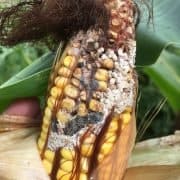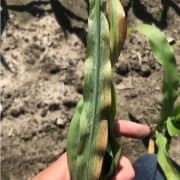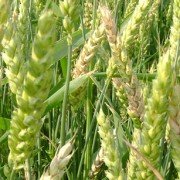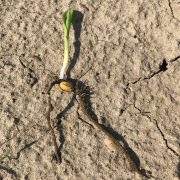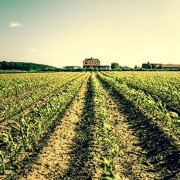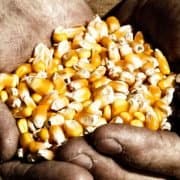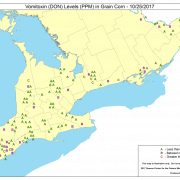Posts
Fusarium head blight
/in Agronomy/by Agronomy TeamWhat is it? Fusarium Head Blight is a fungal disease that affects the head of small grain crops. Also referred to as Scab, it can affect wheat, barley, oats, rye, corn, and triticale. Wheat and barley are generally the most affected. It is mainly caused by the species Fusarium graminearum, and can cause loss of […]
Critical weed-free period
/in Agronomy/by Agronomy TeamWeed-free period in corn In corn this period occurs from V1 to V6 (1 to 6 leaf collars). Some sources will mention that it even begins at the VE stage (emergence). During this time the corn crop needs to stay clean. Weeds will affect yield
Nitrogen stabilizers
/in Agronomy, News/by Agronomy TeamNitrogen management has always been a challenge in high nitrogen demand crops such as corn and winter wheat.
The three pathways that can contribute to significant nitrogen loss are:
- Volatilization (loss of ammonia nitrogen to the atmosphere from the soil surface),
- Denitrification (which occurs when soils are saturated and in an anaerobic environment) and
- Leaching (downward movement of nitrate nitrogen out of the rooting zone due to excessive rains)
The challenge has always been to make nitrogen available when the crop needs it and minimize the exposure of nitrogen to the weather scenarios that contribute to N loss. Consider the nitrogen response relationship for corn and winter wheat (below):
Corn nitrogen response curve
(Adapted from Richie, et.al, 2005, How a Corn Plant Develops).

We often apply nitrogen early in the season before the crop actually utilizes it. For example, the demand for nitrogen in corn is at its peak at about the V10 growth stage (often around early to mid-July). Split-applying nitrogen has been a reasonably effective way to reduce the risk of nitrogen loss, however, with added application costs. Read more
U.S. corn carryout could easily notch five-year low in 2019: Braun
/in Grain Marketing, News/by Grain Marketing TeamBy Karen Braun
CHICAGO (Reuters) – The U.S. Department of Agriculture’s stingy forecast for domestic corn plantings could be one of the first signposts toward an increasingly bullish corn environment over the next year or so.
Industry analysts had predicted that 2018 U.S. corn plantings would fall slightly from year-ago levels to 89.42 million acres, so USDA’s peg of 88.026 million last Thursday offered a surprising jolt to the Chicago futures market. Read more
Late season nitrogen application
/in Agronomy, Technology/by Agronomy Team Late season nitrogen application has been a hot topic amongst farmers and uptake in this practice has increased in recent years. The expense and environmental impact has made growers think differently about nitrogen application.
Late season nitrogen application has been a hot topic amongst farmers and uptake in this practice has increased in recent years. The expense and environmental impact has made growers think differently about nitrogen application.
Weather extremes has also caused growers to change the way they apply nitrogen to mitigate loses from excessive rainfall when applying all their nitrogen ahead of planting. Read more
To be leaders in the food and agribusiness sector through sustainability, integrity, relationships, employee engagement, profitability and innovation.

